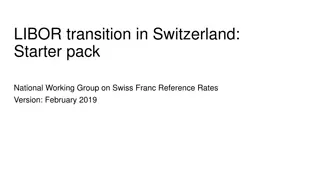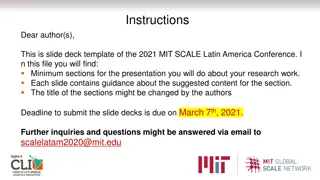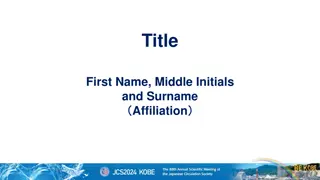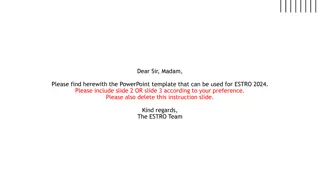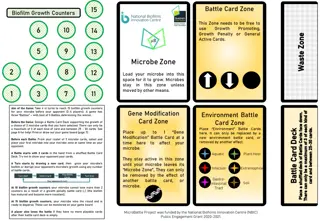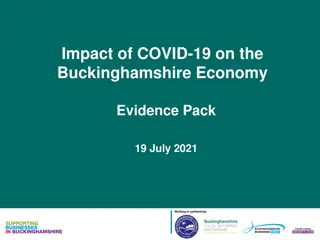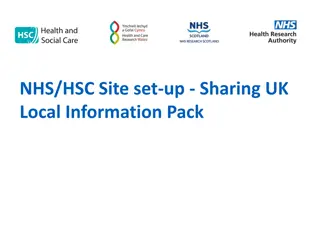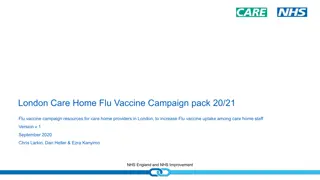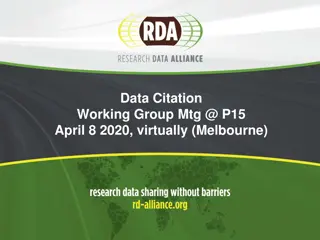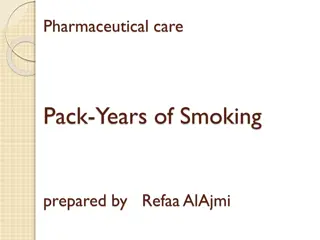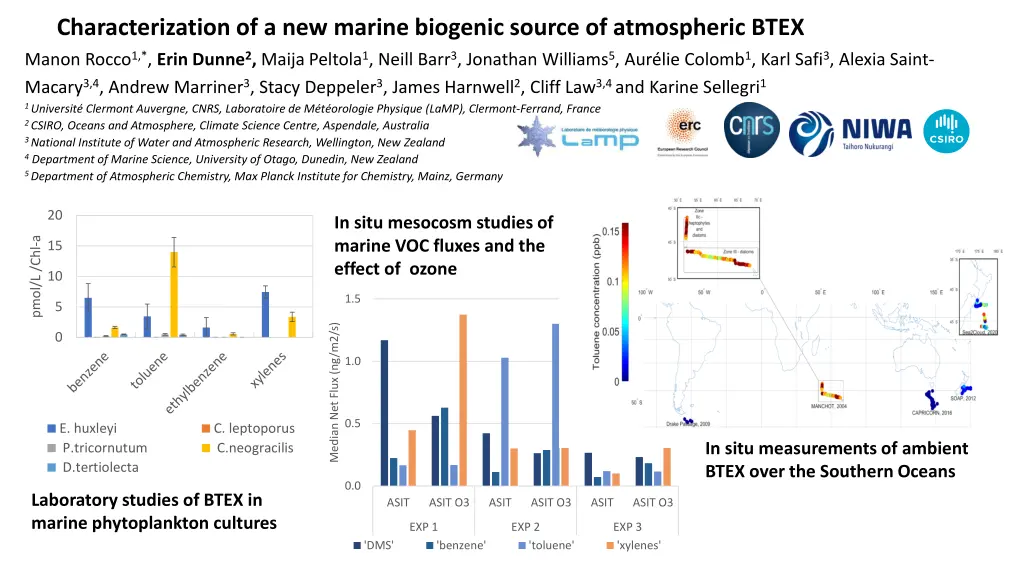
Marine Biogenic Source of BTEX and VOCs Study
Explore the characterization of a new marine biogenic source of atmospheric BTEX and VOCs through in situ mesocosm and laboratory studies, shedding light on VOC fluxes in Air-Sea interaction and ambient concentrations over the Southern Oceans. Investigate the impact of ozone headspace concentrations on VOC net fluxes during mesocosm experiments, offering insights into marine phytoplankton cultures' BTEX emissions.
Download Presentation

Please find below an Image/Link to download the presentation.
The content on the website is provided AS IS for your information and personal use only. It may not be sold, licensed, or shared on other websites without obtaining consent from the author. If you encounter any issues during the download, it is possible that the publisher has removed the file from their server.
You are allowed to download the files provided on this website for personal or commercial use, subject to the condition that they are used lawfully. All files are the property of their respective owners.
The content on the website is provided AS IS for your information and personal use only. It may not be sold, licensed, or shared on other websites without obtaining consent from the author.
E N D
Presentation Transcript
Characterization of a new marine biogenic source of atmospheric BTEX Manon Rocco1,*, Erin Dunne2, Maija Peltola1, Neill Barr3, Jonathan Williams5, Aur lie Colomb1, Karl Safi3, Alexia Saint- Macary3,4, Andrew Marriner3, Stacy Deppeler3, James Harnwell2, Cliff Law3,4 and Karine Sellegri1 1 Universit Clermont Auvergne, CNRS, Laboratoire de M t orologie Physique (LaMP), Clermont-Ferrand, France 2 CSIRO, Oceans and Atmosphere, Climate Science Centre, Aspendale, Australia 3 National Institute of Water and Atmospheric Research, Wellington, New Zealand 4 Department of Marine Science, University of Otago, Dunedin, New Zealand 5 Department of Atmospheric Chemistry, Max Planck Institute for Chemistry, Mainz, Germany 20 In situ mesocosm studies of marine VOC fluxes and the effect of ozone pmol/L /Chl-a 15 10 1.5 5 Median Net Flux (ng/m2/s) 0 1.0 0.5 E. huxleyi P.tricornutum D.tertiolecta C. leptoporus C.neogracilis In situ measurements of ambient BTEX over the Southern Oceans 0.0 Laboratory studies of BTEX in marine phytoplankton cultures ASIT ASIT O3 ASIT ASIT O3 ASIT ASIT O3 EXP 1 EXP 2 EXP 3 'xylenes' 'DMS' 'benzene' 'toluene'
Studies of VOC fluxes in Air-Sea interaction tanks (ASITS) during the Sea2Cloud Voyage in biologically productive waters of SW Pacific, March 2020 VOC net fluxes determined via method described in Sinha et al (2007). VOC fluxes were studied under differing ozone headspace concentrations: ASIT - [O3] = 6.7 1.5 ppb ASITO3 - [O3] = 14.5 2.9 ppb Sea2Cloud ambient: [O3]= 14.6 1.8 ppb 2.0 Median Net Flux (ng/m2/s) 1.5 1.0 0.5 0.0 ASIT ASIT O3 ASIT ASIT O3 ASIT ASIT O3 EXP 1 EXP 2 EXP 3 'DMS' 'benzene' 'toluene' 'xylenes' Sinha, V. et al. Air-sea fluxes of methanol, acetone, acetaldehyde, isoprene and DMS from a Norwegian fjord following a phytoplankton bloom in a mesocosm experiment. Atmos. Chem. Phys. 7, 739 755 (2007).
Laboratory studies of BTEX in marine phytoplankton cultures 18 16 14 12 pmol/L /Chl-a 10 8 6 4 2 0 benzene toluene ethylbenzene xylenes E. huxleyi C. leptoporus P.tricornutum C.neogracilis D.tertiolecta Initial biomass concentration of BTEX normalised to Chlorophyll a (pmol L1/Chl a) in the water in each phytoplankton monoculture. For method see Colomb et al (2008). Colomb, A., Yassaa, N., Williams, J., Peeken, I. & Lochte, K. Screening volatile organic compounds (VOCs) emissionsfrom five marine phytoplanktonspeciesby head space gas chromatography/mass spectrometry (HS-GC/MS). J. Environ. Monit. 10, 325 330 (2008).
Ambient concentrations of BTEX measured over the Southern Oceans Table 1: Datasets of ambient BTEX and DMS mixing ratios from 5 Southern Oceans voyages revisited for this study South West Pacific3 44 S 174 - 181 E Feb-Mar 2012 SOAP Atmos Lifetime 1 (based on OH) Southern Indian Ocean 46 - 49 S 52 70 E Dec 2004 MANCHOT Drake Passage Southern Ocean 52 61 S 61 68 E Mar-Apr 2009 Southern Ocean* 46 51 S 142 151 E Mar Apr 2016 CAPRICORN South West Pacific 42 46 S 174 177 E Mar 2020 Sea2Cloud ppt ppt ppt ppt ppt DMS 1 d 80 30 25 307 208 (22- 257) 110 118 Benzene 9.4 d 85 36 9 8 9 31 10 6 22 18 Toluene 1.9 d 278 75 31 87 5 13 9 5 37 43 Xylenes 5.9 h 262 173 6 29 12 5 24 51
Key Points Evidence of a new and potentially significant marine biogenic source of BTEX to the atmosphere that is not currently considered in regional and global models of trace gas emissions and secondary organic aerosol production. Observed effect of ambient ozone on the magnitude and profile of marine BTEX emissions, the mechanism of which remains unexplained In light of this new evidence, in situ measurements over the Southern Oceans are being revisited to explore the potential linkages between seawater biogeochemistry, marine biogenic BTEX fluxes, and their potential contribution to observed secondary aerosol formation over the open ocean.







